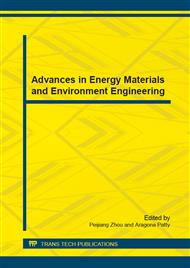p.394
p.400
p.407
p.413
p.417
p.426
p.431
p.437
p.442
A System Dynamics-Based Scenario Analysis of CO2 Emission Peak and Emission Reduction Paths – A Case Study of Chongqing’s Cement Industry
Abstract:
This paper predicts and analyzes the output, energy consumption and CO2 emission in Chongqing’s cement industry in 16 years to come using a dynamics simulation system of carbon emission. A comparison with historical data indicates a desirable goodness of fit of the simulation results, which show that the cement output in Chongqing will reach the peak of about 95 million tons in 2020, followed by a slow decrease to 90 million tons towards 2030; the energy consumption will reach a maximum of some 7.8 million tons of standard coal in 2020; the CO2 emission will reach about 76 million tons in 2020, followed by a drop to 60 million tons towards 2030, equivalent to the 2015 figures. Based on the data, this paper analyzes the influence of different technical paths and policy options on emission in various developmental scenarios, and proposes specific paths for emission reduction.
Info:
Periodical:
Pages:
417-425
Citation:
Online since:
December 2014
Authors:
Price:
Сopyright:
© 2015 Trans Tech Publications Ltd. All Rights Reserved
Share:
Citation:


